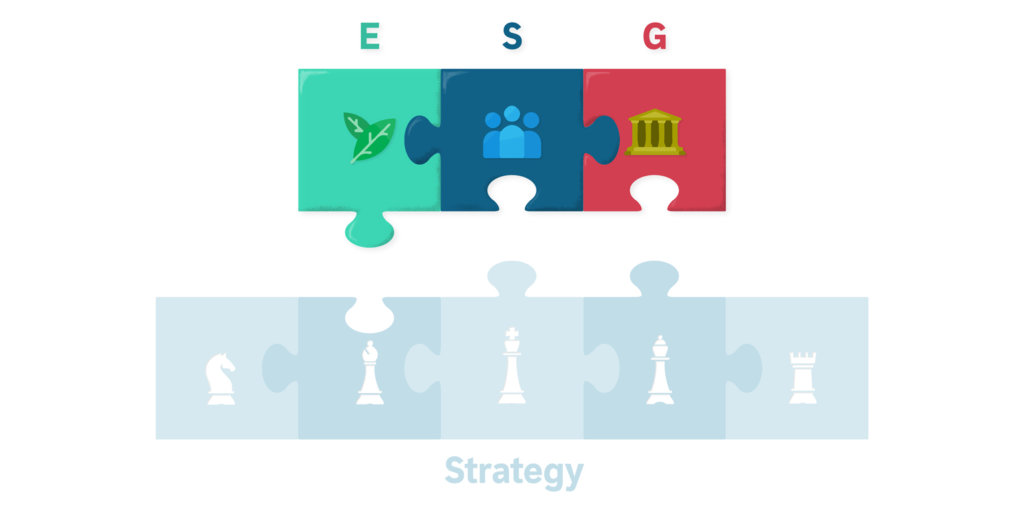Three Steps to Start Your ESG Journey Today
On the heels of this year’s Cop26, it is clear that businesses around the world are committed to reducing their environmental impact and improving sustainability practices. Analysts from McKinsey & Company rightly noted that while nearly everyone is aligned on achieving NetZero, the path to getting there is murky and muddled.
It’s not just a global climate summit that has everyone discussing ways that businesses can do more good. Environmental, Social and Governance (ESG) policies are front and center in every corporate boardroom. Demand for these programs is felt internally with employees and externally with stakeholders, investors and customers. But like achieving NetZero, the path to reaching ESG initiatives is not always straightforward or easy. Each organization is working to set its own standards of what it means to be ESG-compliant, and risk of making a mistake or failing outright is high.
In our era of transformation, ESG initiatives have to be a large part of the strategy to evolve. If you’re just getting started, don’t feel alone. A recent survey from PwC found that 75% of businesses consider themselves in the very early stages. Rather than drag your feet, however, this is a prime opportunity to let your organization lead your industry in creating initiatives that will have a long lasting, positive impact on the future.
Consider these three steps as an ideal starting point to making sure your organization is primed for ESG success.
Define your value and understand your approach
ESG covers a wide range of topics, so wide in fact, it may not make sense to have them under one umbrella within your organization. In addition to environmental impact and sustainability, ESG includes social policies that affect employees and company culture, as well as the broader community. Initiatives around diversity and inclusivity fall under this part of an ESG plan. Finally, governance includes both the way ESG plans are executed as well as managing accountability and transparency, working with regulators and measuring efficacy and results.
Your ESG strategy has to benefit your business and your stakeholders. While that may look different for every organization, there are guiding principles to consider. The UN Sustainable Development Goals (SDG), which outline 17 key areas of focus for the world, the Global Reporting Initiative (GRI), which offers standards for sustainability reporting and the Sustainability Accounting Services Board (SASB), which develops sustainable accounting practices, are all good places to start.
Start by taking a critical look at your company and the industry you work in. Where do problems lie? Where do gaps exist? What is possible to change and which changes will have the most impact?
Create a reasonable plan of action
Issues surrounding climate change or diversity or human rights are never easy. Depending on the structure of your organization, seeing change can take time and measuring the effectiveness of your efforts can be challenging. One of the worst mistakes a company can make is creating ESG initiatives in a vacuum. Because ESG principles cover such a wide range of topics, every individual is going to have a different approach. It’s imperative to consider those most impacted by your ESG strategy – whether they are employees or stakeholders or the consumers you serve – and get their input and buy-in.
Other common mistakes include failing to communicate clearly across your organization and failing to make it a part of your culture. ESG cannot exist in a silo. To be successful, it has to be an element across every business decision.
StrategyBlocks helps to make an ESG strategy more tangible through our cascading block system, which clearly lays out the top-level initiatives and the step by step goals needed to achieve them. Through an easy to manage dashboard, you can quickly see the most up to date insights into progress, potential risk, effectiveness of KPIs and the strategic health of your plan.
Strive for authenticity and transparency
Gone are the days when everything an organization did was kept secret. It is no longer possible, and largely undesirable to work in secret, without any external measure of accountability. As Martin Sandbu laid out in his Financial Times article earlier this year, a new era of corporate transparency is dawning, one where “what can be known, will be known.”
This new environment shouldn’t be feared, however. It can be liberating to be transparent and we have seen remarkable examples of companies that make a mistake but are willing to admit accountability, address issues and right the wrong. Consumers and shareholders are more than willing to forgive missteps if the organization is working hard toward authenticity.
When it comes to something as complex and nascent as ESG, missteps are going to happen. You can sit back and watch other companies make them, or you can take the risk as a leader and carve out the future you want to take, helping others along the way. Rather than see ESG as a competitive advantage, see it as an opportunity to lift your organization, your industry and the rest of the world to accomplish things that impact everyone for the better.
Each of the elements of a strong ESG program are intertwined with one another. Improving one area can help another and failing in one area can harm the others as well. Companies can no longer afford to simply pay lip service to ESG goals. As we head into a new year, now is the time to commit to creating a feasible, practical set of standards that your company can work to implement across every facet of the business. Integrating ESG will prove fruitful in any number of ways – helping you to reduce costs and negative impacts on the environment, accelerate company growth, attract new talent, build loyal customers and contribute to a healthier, happier humanity.




Leave A Comment